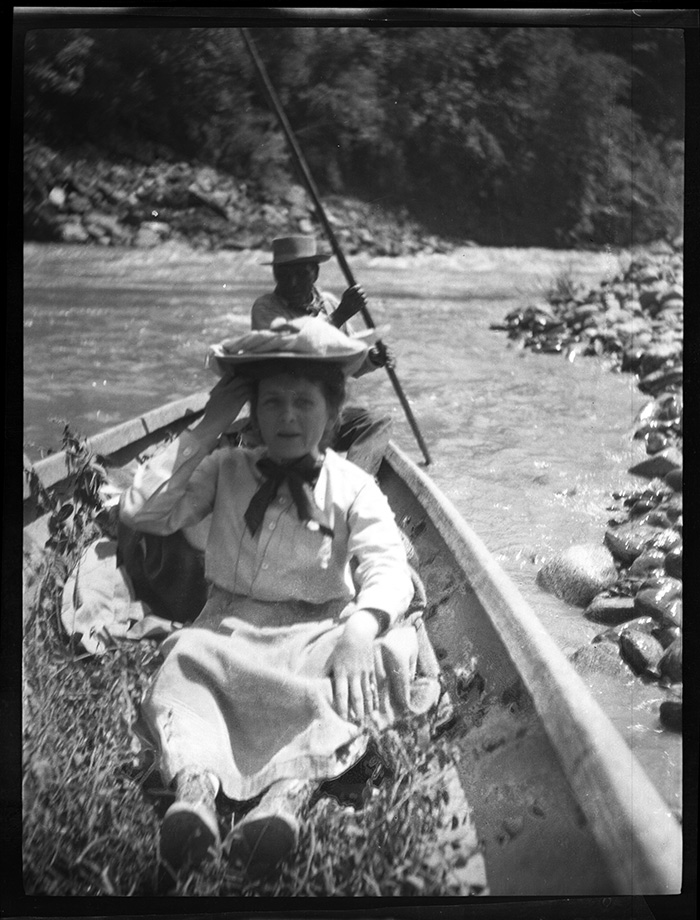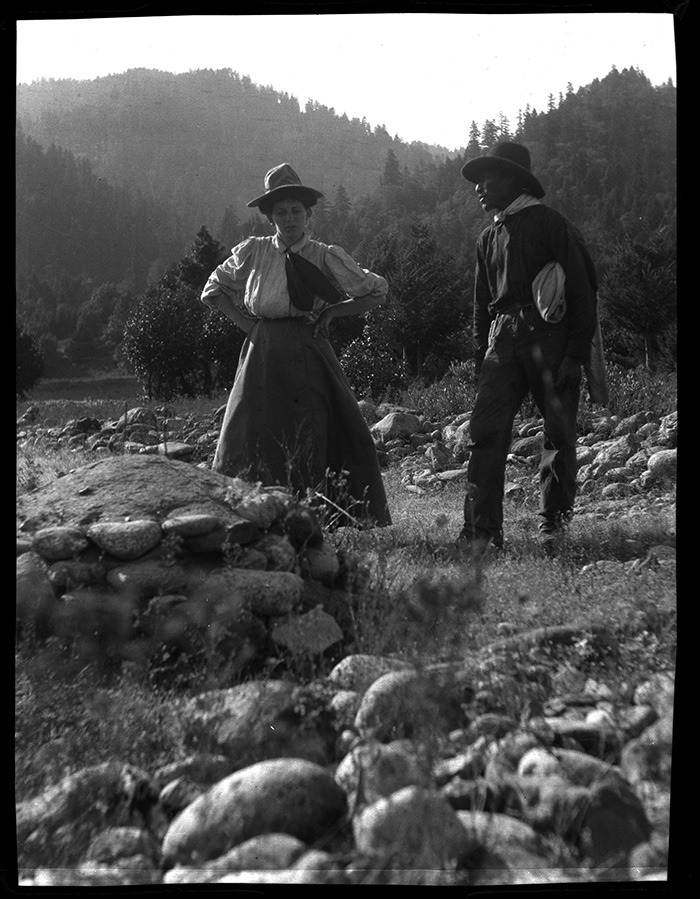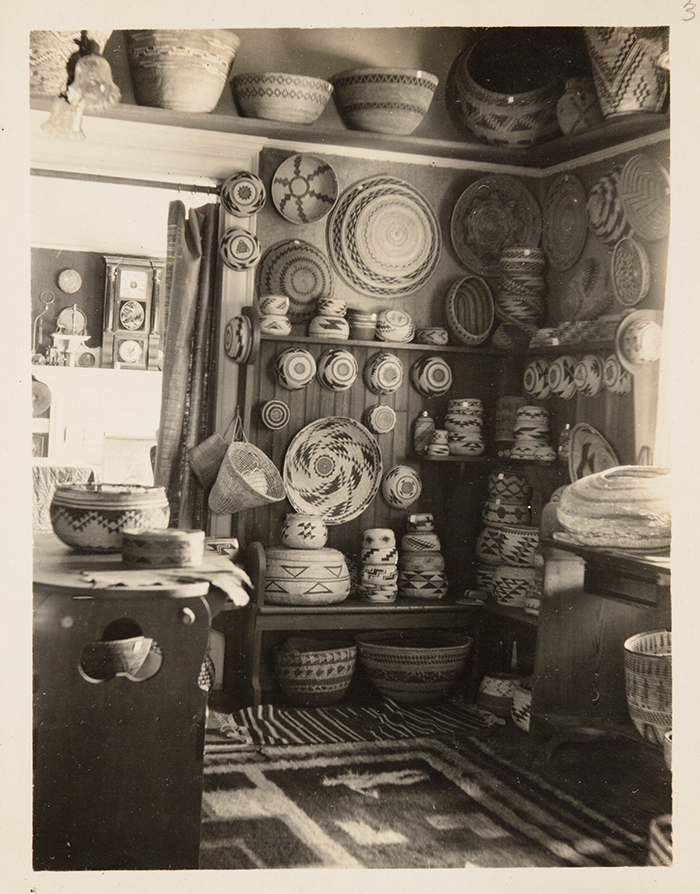The Huntington’s blog takes you behind the scenes for a scholarly view of the collections.
A Life of Adventure
Posted on Fri., April 18, 2014 by

Genevieve Brooks (Yurok) at Requa, Calif., ca. 1910.
As an avid collector, intrepid businesswoman, and amateur anthropologist, Grace Nicholson captured her unique experiences in photographs and journals, providing an intimate look at Indians who lived in California and the Southwest at the beginning of the 20th century. She placed Indian baskets and cultural materials in some of the nation’s most significant collections, including the Smithsonian, the Peabody Museum at Harvard University, the Field Museum in Chicago, and the Southwest Museum of the American Indian Collection at the Autry. Her personal collection of papers and photographs came to the Huntington Library in 1968. As part of the Native American photographs cataloging project, approximately 10,000 photos that form this important collection are now fully organized and cataloged.
Born in 1877 in Philadelphia and orphaned as a teenager, Nicholson took a business course and learned to type in order to support herself. And support herself she did, setting out alone for California in 1901 at the age of 23.
Within a couple of years of arriving in Pasadena, she opened her eponymous store, which sold Indian baskets and other curios. Later, she moved the shop from Raymond Avenue to a location across from the Hotel Maryland on Los Robles Avenue, a popular tourist destination. She eventually shifted her focus to Asian art, constructing a grand Chinese-style building (completed in 1929), with a store, expansive galleries, a central Chinese garden and her personal apartment. The next iteration of her business, the Grace Nicholson Treasure House of Oriental Art, later became home to the USC Pacific Asia Museum.

“Canoe & occupants, en route, Trinity,” 1906. Grace Nicholson is in front.
As if being a single woman running her own trading business in 1904 wasn’t ambitious enough, Nicholson's chutzpah and taste for adventure inspired long journeys to Indian villages throughout the Southwest. It was one thing to buy a basket collection wholesale from a fellow collector, but quite another to buy directly from basket weavers and other artisans, traveling by horse and buggy, canoe, train, and burro, as well as on foot, all in the quest to collect from the source. On one such adventure, Nicholson and her assistant, Mr. Carroll Hartman, navigated the Klamath River in a dugout canoe with the help of a Pomo Indian oarsman.
“We started down the river,” she wrote in her journal in 1906. “Soon we were in the rapids…. One place he said ‘bad water,’” she wrote, referring to the Pomo Indian oarsman. “Sure enough it seemed to boil. He had us get out, and we scrambled over the rocks so that he might make a go shooting the rapids, and after it was over he cried an invocation to the rock who had been there so many years.”

Nicholson with the Karok man that she called Camp Creek George (at Klamath River).
Of particular interest in the Nicholson collection are six large leather-bound albums of photos that she compiled—visual memoirs of her basket-collecting trips up and down the Pacific coast. Nicholson or Hartman took most of the images. She seems to have had a naturalness and warmth with people, qualities that are reflected in many of the photographs. In one shot at a ceremonial dance site, she is seen listening to a Karok man she called Camp Creek George. And she frequently wrote herself reminders to mail photos to her subjects, which she regularly did.
Nicholson also wrote captions for the photos, often spelling out the subject’s Indian name or Anglo-attributed name, tribal affiliation, and his or her relation to others in the tribe. She was conscientious about recording names, places, materials, basket-weaving methods, and myths and legends.

Baskets for sale in Grace Nicholson’s store at 46 N. Los Robles Ave., Pasadena, 1906.
She remained a lifelong collector. In 1940, toward the end of her life, Nicholson wrote to a potential buyer of Indian artifacts—a Miss Livermore of Morristown, N.J. “May I hear from you as to what interests you? A record of over 40,000 objects—personally collected—has been full of adventures.”
The Grace Nicholson Photograph Collection is open for research to qualified researchers. You can review the finding aid on the website of the Online Archive of California.
To view some bonus images related to this post, head over to our Tumblr.
Suzanne Oatey is a project archivist in the photograph collections at The Huntington.